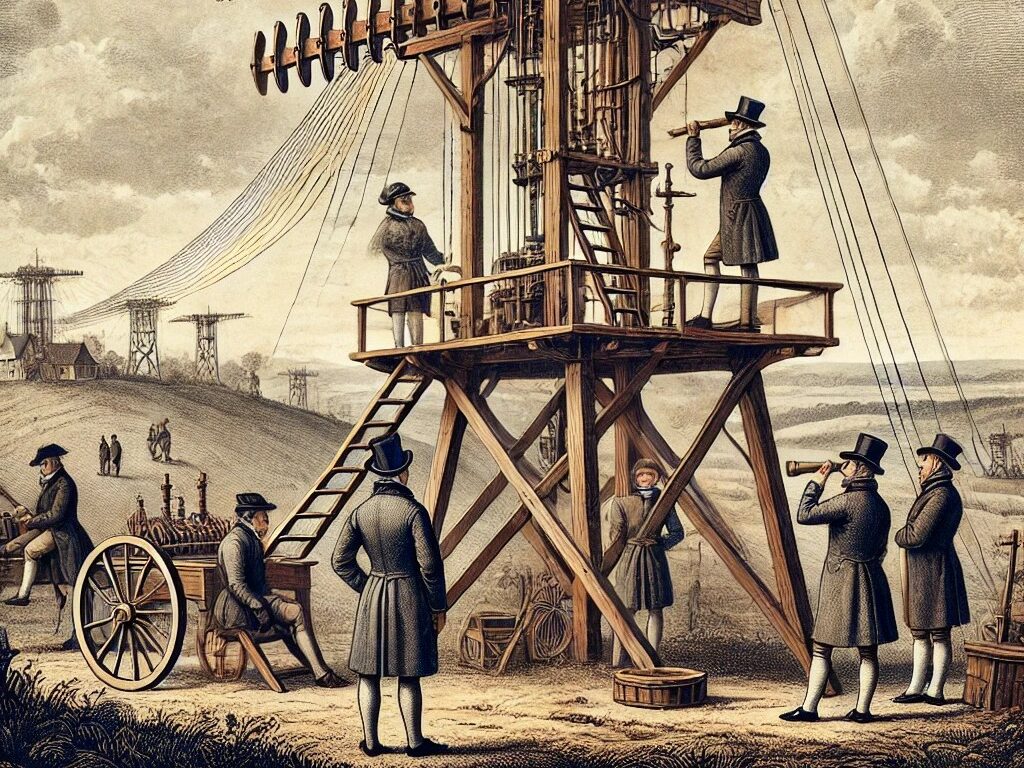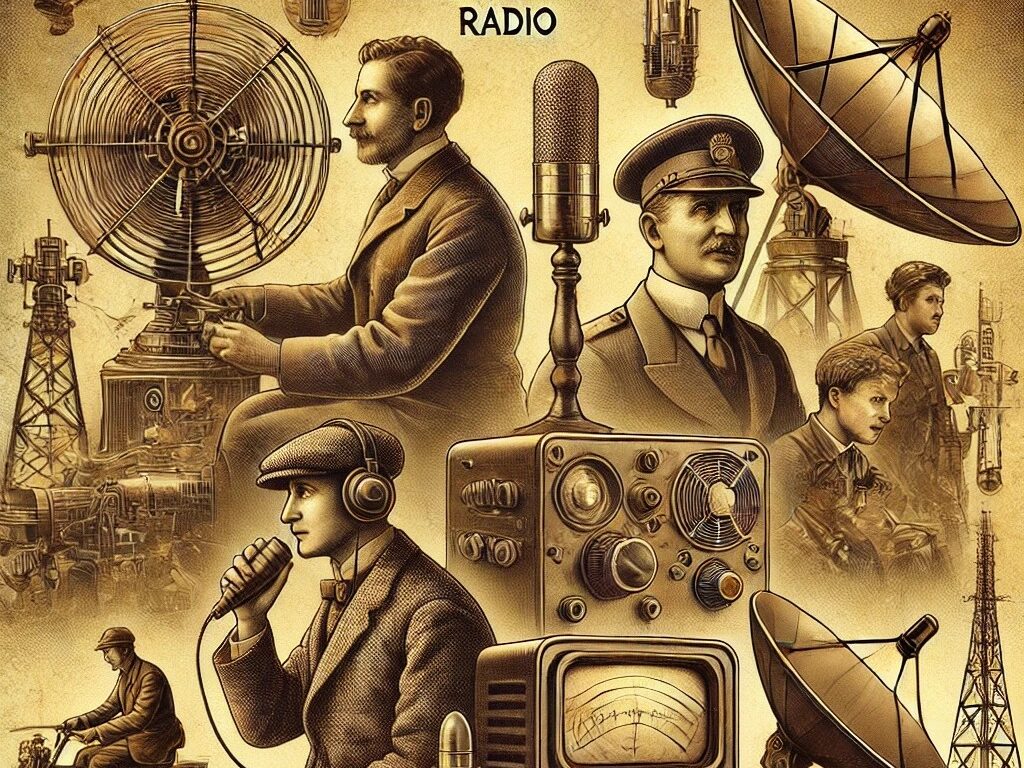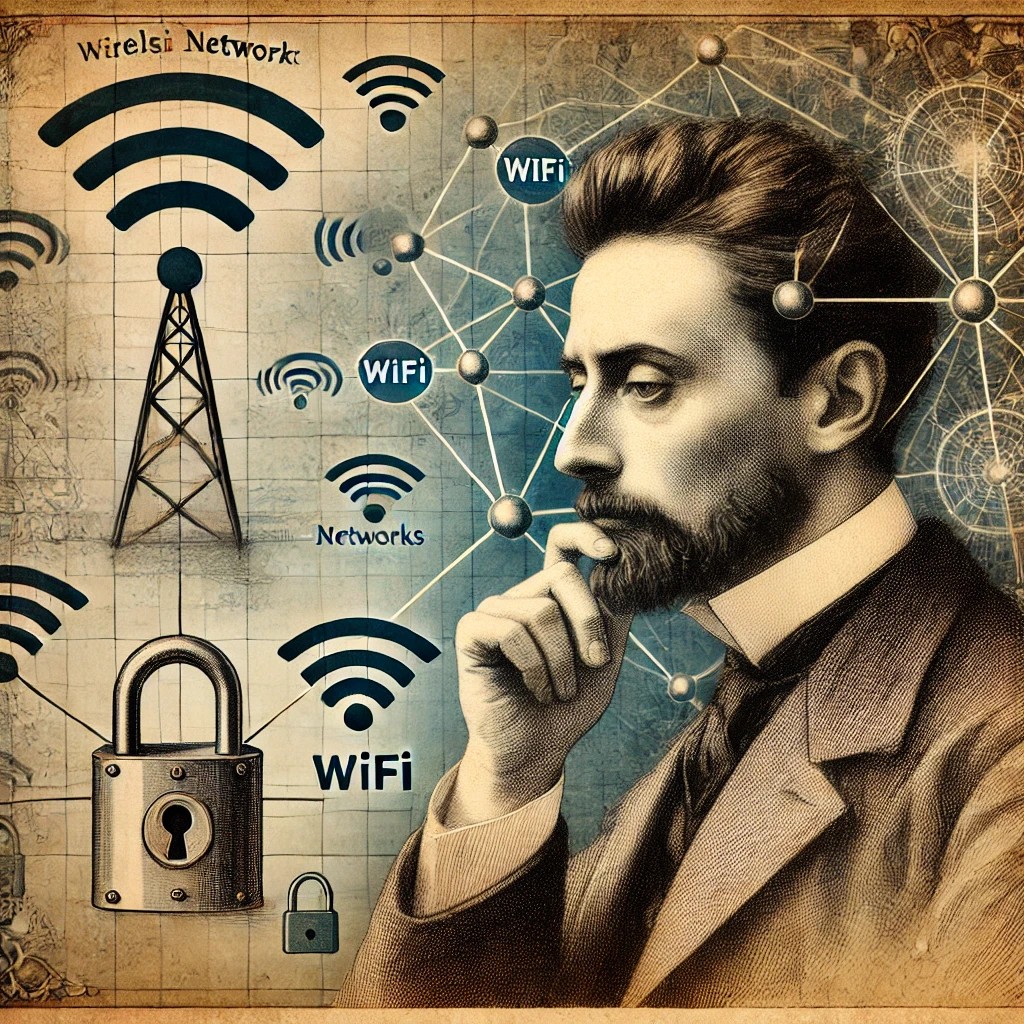
RedWave Team : 18 October 2025 09:18
Today, we live in a world where WiFi is a fundamental necessity, but how did this technology, now taken for granted, come about? How did it then develop into the network we now use every day?
In this article, we’ll explore the origins and evolution of WiFi. We’ll analyze both the technologies that made it possible and the threats that accompany it.
This article is the first in our ” WiFi Column ,” where we’ll delve into the mechanisms and techniques of attack, illustrating the best strategies for protecting our wireless connection. Welcome to a world without wires… and without secrets.

To answer this question, we need to go back in time. To the early 20th century, a man named Guglielmo Marconi demonstrated to the world that electromagnetic waves could be transmitted wirelessly, using radio waves to carry signals over long distances. To do this, he used a relatively low frequency to send Morse code signals over large distances.
Marconi, considered one of the fathers of wireless communication, accomplished an incredible feat by transmitting the first transatlantic signal in 1901. To do this, he used a wavelength of approximately 365 meters, corresponding to a frequency of 820 kHz, which allowed signals to travel through the atmosphere.
This discovery marked the beginning of a revolution, but also the starting point for the history of communications security. Indeed, a few years later, Marconi faced a “hacker attack.” Nevil Maskelyne, a magician and inventor, managed to sabotage a public demonstration of Marconi’s wireless communications by sending interfering messages.
As also reported in our article where we talked about this anecdote:
Nevil Maskelyne: the first hacker in history
“Rats, Rats, Rats” were the words that were magically transmitted repeatedly over the system… The prank continued for some time, with the audience stunned, as several humorous verses were broadcast discrediting Marconi and his invention. This was because on that fateful June 3, Maskelyne set up shop in a building adjacent to the theater and activated a small transmitter he had specially developed, amusing (today we would say “trolling”) Marconi and Fleming by interfering in their telecommunications.

Before the spread of radio waves, one of the earliest forms of long-distance communication was the optical telegraph , invented in France by Claude Chappe in 1792. This system used visual signals through a semaphore mechanism consisting of two movable arms attached to a central bar. The positions of the arms represented letters, numbers, and codes, and were observed and replicated remotely by transmitting stations placed on towers or hills to maintain a clear line of sight.
Each station replicated the received message to the next, allowing long distances to be covered. During the Napoleonic era, Chappe’s optical telegraph was essential for rapid communication, especially for military purposes. Despite its efficiency, the system was limited to daylight hours and required favorable weather conditions. With the invention of the electric telegraph in the mid-19th century, the optical telegraph became obsolete, but it marked a milestone in the history of telecommunications.
In 1834, the optical telegraph was the target of one of the first information hacking attacks. François and Joseph Blanc , two brothers who ran an investment firm in Bordeaux, discovered a way to exploit the French government telegraph network to their advantage. Working with an operator within the network, they managed to insert coded signals that indicated significant fluctuations in the Paris Stock Exchange. This attack allowed them to obtain confidential financial information in advance, thus influencing their investments.
This event demonstrates how the desire to manipulate and obtain confidential data has been present since the earliest communications networks. The Blanc brothers case highlighted for the first time the vulnerability of networks and the need to protect communications, a concept that remains crucial even in today’s wireless technologies.
You can find more information on this anecdote in the Focus article.

In the years that followed, radio frequency diversified.
Broadcasting expanded into the medium (MF) and high (HF) frequencies, paving the way for commercial radio and voice transmission beyond the simple Morse signal.
During World War II, VHF and UHF waves became essential for military communications, allowing the secure transmission of strategic information on the battlefield. U.S. forces used these bands to coordinate large-scale military operations, but enemy interception posed a constant risk.
To secure communications, the U.S. Army introduced the famous Navajo Code Talkers , Native American soldiers who used the Navajo language to encrypt messages, making them unintelligible to Japanese interceptors. The Navajo code proved essential during World War II and was a precursor to modern cryptography techniques, laying the foundation for secure wireless transmissions.
Additionally, during the Vietnam War , VHF and UHF frequencies became the target of jamming attacks by North Vietnamese forces, who attempted to disrupt U.S. communications. In response, the U.S. military adopted frequency-hopping techniques such as the HAVE QUICK system, which allowed transmissions to rapidly change frequencies, making interception and jamming more difficult.
Here you can find more information about the Have Quick system – Wikipedia

With the transition to millimeter waves , radio transmissions reached even higher frequencies, paving the way for the transmission of more complex data, such as real-time voice and even images. This advancement, in the 1970s and 1980s, led to the creation of wireless local area networks (WLANs) , which used unlicensed frequency bands for data transmission.
During this period, the potential of high-frequency broadcasts also highlighted some vulnerabilities: a famous example was the Captain Midnight incident of 1986, in which John R. MacDougall (using the pseudonym ” Captain Midnight “) managed to interrupt an HBO UHF satellite broadcast, broadcasting a message protesting HBO’s fees for satellite dish owners, which he considered too expensive. This event, by what we would now call a Hacktivist ( we recommend this video to learn more about the differences between Activism & Hacktivism ), highlighted the risks of piracy and interference in wireless communications and stimulated the growth of new security techniques to protect wireless transmissions.
Here you can find more information about Captain Midnight broadcast signal intrusion – Wikipedia
The real development of WiFi began in the 1990s with the definition of the IEEE 802.11 standard. This standard enabled the use of the 2.4 GHz frequency (ISM band – Industrial, Scientific and Medical), an unlicensed and publicly accessible band, laying the foundation for the widespread deployment of WiFi.
The growing demand for speed and the need to avoid congestion then pushed for the integration of the 5 GHz band , offering a more stable signal and less subject to interference.
However, the openness of this technology exposed WiFi networks to the first attacks, one of which came to light in 2004 with the famous “War Spammer” case.
In this case, a cybercriminal exploited a company’s open Wi-Fi network to send thousands of spam emails. This made the company the unwitting victim of illegal activity and placed it in conflict with U.S. federal anti-spam regulations. The FBI opened an investigation, highlighting the importance of protecting wireless networks against spam threats and network abuse. This case was a wake-up call for many companies, which recognized the need to adopt more advanced security measures to avoid being used as a gateway for illicit activity.
Here you can find the original FBI article — First “War Spammer” Convicted Under Fed Laws
Over the years, the WiFi standard has evolved with the introduction of new technologies: WiFi 4, 5, and 6 added advanced solutions such as OFDM (Orthogonal Frequency-Division Multiplexing) and MU-MIMO (Multi-User Multiple Input, Multiple Output). These innovations allowed multiple devices to communicate simultaneously on the same frequency without compromising signal quality. The WiFi 6E version, extending use to the 6 GHz band, further improved speed and reduced latency. This enabled more intensive and versatile use of WiFi.

Since the first radio transmissions, the need to ensure the security of communications has emerged.
From Marconi to the present day, wireless communications have highlighted the importance of protecting transmissions from potential threats, becoming a central theme of cybersecurity.
We’ve explored the origins and development of WiFi, but this is just the beginning of our journey. In future articles, we’ll delve into the technical details of WiFi networks. We’ll analyze the attack techniques that jeopardize connection security, the most effective defense methods, and the dangers every user should be aware of.
From vulnerabilities in encryption protocols to widespread attacks like “Man-in-the-Middle” and “Evil Twin,” to new solutions like WPA3, Passpoint, and OpenRoaming, we’ll guide you through the world of wireless network security to better understand the risks and protection strategies.
Stay with us to discover the hidden side of WiFi… because in a wireless world, security is never a given.
 RedWave Team
RedWave Team